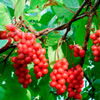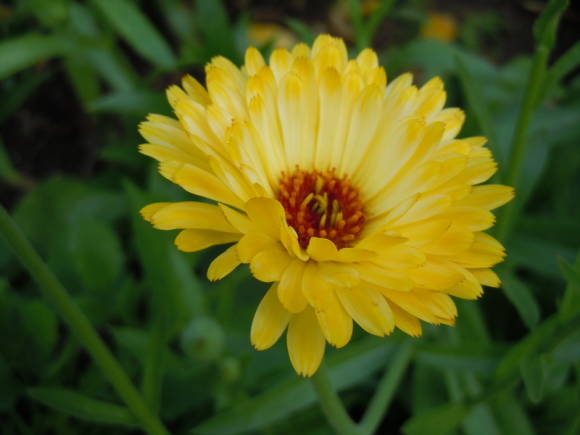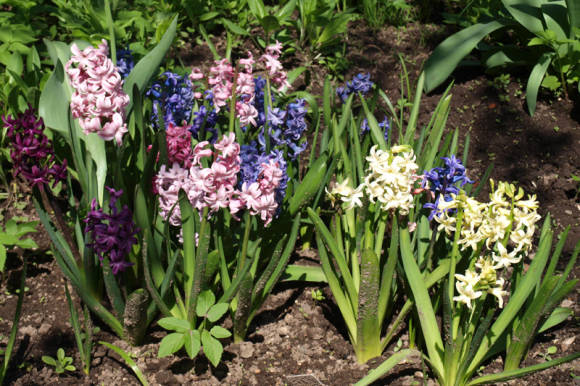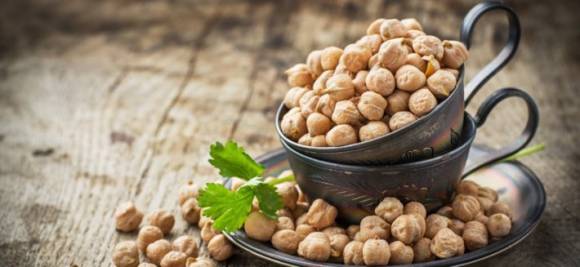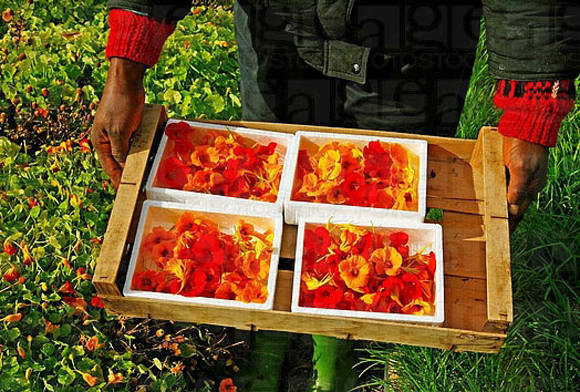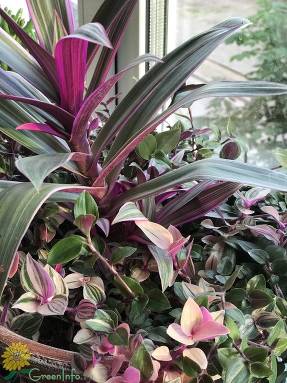
All gardeners know that it is better to plant or replant strawberries and strawberries every 2-3 years in order to rejuvenate plantings and maintain yields. I want to share my experience in growing strawberries. This technology is also well suited for simple propagation of rare or purchased in a small amount of strawberries and strawberries, and not only remontant ones.
What is its fundamental difference from the usual method of planting strawberries? Seedlings or rooted whiskers, in general, are ordinary. Laying compost, sand, peat and fertilizers also differs little from the generally accepted norms and preferences of gardeners. The fundamental difference lies in the slight rise of the ridges and covering them with non-woven covering material or dense polyethylene, preferably black or completely dark in color. Ridges rise about 18-25 cm above the general level of walkways or paths, and clods of earth, especially superficial ones, are carefully crushed and compacted to reduce the formation of voids under the shelter.
 |  |  |
This method has 5 obvious and very valuable for us, gardeners, advantages:
- Weeds practically do not grow, which greatly facilitates care during the entire growing season and fruiting of plants.
- The crop is not contaminated with splashes from rain and soil particles, which is especially valuable in rainy years. The berries are almost always dry and clean; they are much more pleasant to handle.
- The fruits do not come into direct contact with the soil and are located at a certain elevation, they are better ventilated and dry out faster after watering or rain. The risk of being affected by various rot and other diseases is reduced.
- Raised covered ridges warm up much faster in spring, the bushes bloom earlier and give the first harvest. In dry years, on the contrary, moisture under the shelter lasts much longer.
- Plants are much less likely to freeze in winter and are less damaged by spring-summer return frosts.

In cross-section, the ridge should be an elongated trapezoid or a small, highly elongated segment of a circle, oval or ellipse with a sufficiently large radius. This is necessary for the slope of dew, excess moisture and heavy rainfall. In addition, the sides of the ridges located at a slight angle warm up faster in spring and autumn, and the berries ripen on them much faster and more amicably. With such agricultural technology, you can get marketable berries on average two or even three weeks earlier than the usual traditional technologies for growing garden strawberries.
The covering material must be evenly spread over the entire surface of the ridges, the width of which is chosen on average from 80 to 120 cm, if measured at their very base. The optimal width and height of the ridges are subsequently selected experimentally so that it is convenient for you to harvest and process plantings. Taller gardeners try to choose the width of the ridges close to 100-120 cm and plant strawberries in 3 or even 4 rows, but most often they are planted in 2-3 rows and the width of the ridges is chosen about 80-90 cm.
The edges of the covering material must be secured with something from possible gusts of wind, especially at first, to complete rooting from freshly planted strawberry bushes. This is best done with flat stones or planks, or simply sprinkle with soil around the edges. However, it is safer to pin all the covering material around the edges with special U-shaped staples, very similar to staples from a stapler, only of a much larger size. The staples can be made in advance from sufficiently thick and strong wire or unnecessary welding electrodes.
 |  |
As a covering material, I most often use a very dense black non-woven fabric with a density of about 60 g / sq. m, permeable to moisture and well resistant to ultraviolet rays.Previously, I also used high-density black polyethylene film, but I like it much less, because it does not allow water to pass through at all, creates a strong greenhouse effect and is less resistant to ultraviolet light - it breaks down faster under the influence of sunlight, making room for weeds. In terms of weed resistance in the first year, these two materials are approximately the same, but then the dense non-woven material begins to noticeably surpass black polyethylene.
Well, we carefully prepared the ridges, spilled them with water to settle the soil and eliminate possible voids, then leveled them well over the entire surface and carefully covered them.

We proceed directly to planting. To do this, we need several buckets of coarse river sand, a long string, several small pegs, a narrow scoop and a sharp knife. With a knife, we will make cross-shaped cuts, about 6x6 cm, for planting rooted strawberry rosettes. Having made a cut, we carefully bend the edge of the covering material inward and we have a square or rhombus with a side of about 5-6 cm.It is no longer worth making a cut, since an increase in this window can only lead to a noticeable increase in the number of weeds that have sprouted or sown through it. Twine and pegs are needed for more accurate preparation and laying of ridges, as well as for even cutting holes and planting strawberry seedlings.

We take out a little earth from the formed window or distribute it evenly under the shelter. If in the area of the formed window small voids are probed, then we fill them with pre-prepared river sand or soil. The sand is more convenient to use, since it is easily washed off after all the work is completed from the ridges, without leaving dirty marks on the bushes, berries and the covering material itself. We plant a rooted rosette in the formed hole and sprinkle it tightly with soil removed from it or prepared sand. Then we compact the landing site and, if necessary, add sand to the level of the covering material. We also fill in all the remaining voids formed with it. Then water the planted plants abundantly from the watering can. At the same time, we achieve two results at the same time - we moisten the soil around the plants and wash off excess soil and sand into the passages and cuts of the film. Ideally, the covering material should be almost completely clean if you have correctly formed the bed profile and slopes. This will protect plants and berries from further contamination by splashing rain, and the root system from drying out for the next few days, and will ensure good survival of young rosettes. In the first few days, especially in sunny weather, it is advisable to shade young plants and water them regularly. If for some reason several bushes do not take root, do not despair, you can always plant spare rooted strawberry bushes in the finished hole, or in a month and a half - young rosettes formed from new mustaches.
Weeds with such a shelter of ridges make their way through the holes only occasionally. Some strong and poorly selected weeds from the ridge at first can slightly raise the covering material, creating voids under it. It is advisable to avoid this by carefully selecting all the roots of the weeds when preparing the ridges and carefully removing the sprouted specimens. For a while, you can press them down with heavy objects - flat stones, bricks or heavy rods. The same should be done in the first months after landing to protect the covering material from strong winds, the windage of which greatly increases due to the holes made. In the future, strawberry bushes will root well, give a good increase in vegetative mass and berries, and they themselves will successfully resist the pressure of weeds from below and strong winds from above. After some time, you will be able to remove all unnecessary items, giving the ridges a beautiful and neat look.

Strawberry and strawberry repair varieties can give one or two harvests already in the first season after planting, depending on the timing of planting. In the photo you can see the autumn (September) harvest of Queen Elizabeth strawberries, planted in mid-June. We take off the harvest from last year's ridges quite regularly throughout the season. More than enough for everyone: the older generation, children and grandchildren, and sometimes we treat our neighbors.
 |  |
For the winter, I practically do not cover the strawberry rosettes, I only slightly cut the old stalks, leaves and whiskers at the base. But if desired, they can be covered with spruce branches, coniferous litter, straw or dry foliage. Lapwood and straw contribute to some extent to snow retention in winter. If the cover layer is large enough, then in early spring, do not forget to remove it immediately after the snow melts, otherwise some bushes may get warm from excess moisture.
The plants should be fed in spring and autumn according to the classical scheme. In early spring, nitrogen and phosphorus should slightly prevail in complex fertilizers. At the end of spring and summer, the ratio of the main elements, i.e. nitrogen, potassium and phosphorus should be about the same. And towards the end of the season, nitrogen must be practically eliminated for better wintering of plants. But you need to be more careful with fertilizers, in my opinion, it is better to under-supply a little than to overdo it! It's your favorite family treat, though.

